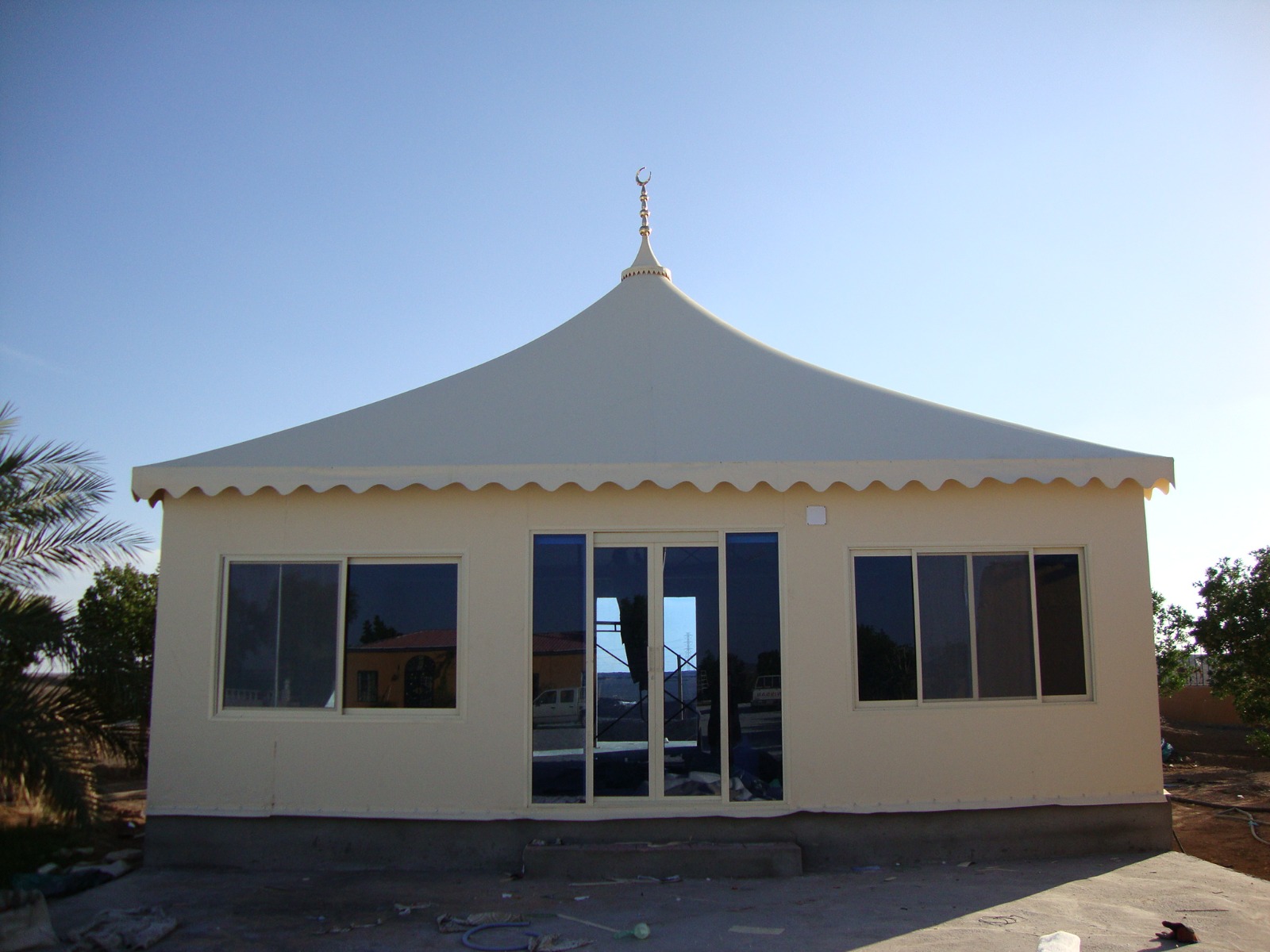 Arabic Tent[/caption]
Arabic Tent[/caption]Tradition Meets Contemporary Comfort
Modern Arabic tent design is all about honoring tradition while embracing new materials, technologies, and aesthetics. It’s not just a shelter; it’s a statement of heritage adapted for today’s needs.
These tents blend classic Arabian majlis culture with practical upgrades like weatherproof fabrics, modular frames, and stylish interiors. So let’s dig in: why choose a modern Arabic tent, what sets it apart, and what should you look for if you’re buying or commissioning one?
Why Choose a Modern Arabic Tent?
The appeal of a modern Arabic tent lies in its balance of heritage and innovation.
Traditional tents in the Arab world were designed for desert life: portable, wind-resistant, and built to handle scorching sun and chilly nights. They were woven from goat hair or other natural fibers, designed to breathe but also shed water.
But times have changed. Today, a modern Arabic tent serves many roles:
- Private majlis or social gathering space
- Event venue
- Restaurant or café extension
- Luxury desert camp
- Hotel or resort feature
People want the cultural vibe, but also expect comfort, durability, and style that meets modern standards.
Blending Tradition and Technology
What sets the modern Arabic tent apart is the way it respects tradition while using modern materials.
Instead of hand-woven goat hair, you’ll often find:
- UV-resistant PVC or canvas fabric
- Waterproof and fire-retardant coatings
- Reinforced stitching to prevent tearing
- Insulated liners for temperature control
Frames that used to be simple wooden poles may now be powder-coated steel or aluminum. This upgrade improves strength, resists corrosion, and allows larger, more open designs with fewer support columns in the way.
Stylish Interiors with Arabian Flair
One of the defining features of a modern Arabic tent is the interior. This is where tradition truly shines, but with a contemporary twist.
Expect:
- Rich textiles in classic patterns
- Elegant low seating and cushions
- Carpets or rugs for comfort and warmth
- Subtle lighting for ambiance
- Air conditioning or fans discreetly integrated
Designers often combine these traditional elements with minimalist modern lines. You get the classic majlis atmosphere, but in a space that feels updated and welcoming even to international guests.
It’s not unusual to see modular interiors that can adapt to different uses—casual family gatherings, formal events, or even corporate meetings.
Adaptable for Many Uses
A modern Arabic tent isn’t just for personal use. Businesses are increasingly investing in them because they’re versatile, eye-catching, and culturally resonant.
Consider these applications:
- Hotels offering luxury “glamping” experiences in the desert
- Restaurants creating outdoor dining spaces with local character
- Wedding venues seeking a dramatic, authentic Arabian feel
- Resorts offering private, air-conditioned majlis tents by the beach or pool
Because these tents can be customized in size, color, and interior design, they’re an effective way to blend brand identity with local tradition.
Durability and Practicality Matter
When you’re shopping for or commissioning a modern Arabic tent, you shouldn’t just think about looks.
Quality matters, especially in the harsh climates of the GCC and wider Middle East. Look for:
- Heavy-duty, UV-resistant fabrics that won’t fade or degrade quickly
- Waterproof seams and coatings to handle rare but heavy rain
- Sturdy frames that can be anchored securely in sandy or rocky ground
- Fire-retardant certification if required for commercial use
These details can mean the difference between a tent that looks good for one season and one that lasts for years with minimal maintenance.
Easy Setup and Maintenance
Another feature of a modern Arabic tent is smarter engineering for setup and storage.
Traditional Bedouin tents were designed to be taken down and moved quickly. Modern versions keep that spirit with:
- Modular frame systems
- Color-coded or labeled poles
- Reinforced attachment points
- Quick-release connectors
This makes them practical for event companies or venues that need to install and remove them often.
For permanent setups, maintenance is usually simple: periodic cleaning, checking seams and fasteners, and occasional re-coating or waterproofing if needed.